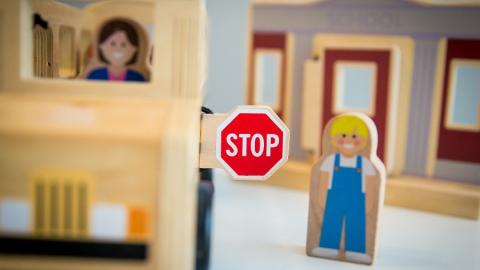
We all need to be safe. According to Maslow’s hierarchy of needs, safety is even more important than our needs for belonging, esteem, and self-actualization. Safety is second only to having our most basic needs met (e.g., food, water, shelter).
I remember feeling safe as a child during thunderstorms, even tornadoes—as long as my parents were nearby and I had my pillow. I remember feeling safe at church, surrounded by adults and children who cared about me and valued me.
As a young adult in the Netherlands, I remember not feeling safe when the embassy called putting us on high alert for terrorism. Years later, I remember not feeling safe my first night in Nicaragua when I thought bombs were going off overhead (I learned in the morning that it was fireworks) and when I thought men were pounding on the gate to our complex. What are your memories of safety?
Similar to security, “safety” can be defined as “protected from harm or other nondesirable outcomes.” We want our organizations to be safe. At a most basic level, this includes following codes, meeting standards, and following policies. But safety isn’t always so straightforward nor is it universal. Safety is subjective, based on personal characteristics like age, gender, and life experiences. What feels safe for one person may not feel safe for another.
When we feel unsafe, we often feel powerless; we may withdraw, or be paralyzed, or fight back. When we feel safe, we can be curious, learn, and grow—attributes that we especially want to foster in our children and youth.
As faith communities, we need to invest time and resources into making children and youth feel safe. It takes intentionality to consider basic childproofing for young children, relational safety for school-age children (e.g., bullying), and child abuse prevention for children and youth of all ages.
Many of us would like to think that child abuse doesn’t happen, and even if it does, it certainly doesn’t happen here. We may be blinded by the feeling of “family” in our community. However, statistics show that nearly all abused children were abused by someone they knew, quite often a parent. So our excuse that “churches are like families” and therefore we don’t need to follow child protection practices doesn’t hold up.
Child abuse most often occurs within relationships. An offender may be a parent, sibling, cousin, teacher, or neighbor. While we don’t want to be suspicious of everyone, we do need to keep our eyes and hearts open to all the ways that children and youth may be vulnerable.
Through our work with Dove’s Nest, we offer faith communities training, strategies, and resources for writing, adopting, and implementing child protection policies. We also frequently consult with churches on how to respond to possible abuse and how to balance protection and inclusion when someone is present who has or may have offended.
A culture and environment of child protection includes many components. Based on age and role, everyone needs training on types, risks, and effects of all types of abuse and neglect. Organizations need to look at their facilities and consider how to keep children and youth safe (e.g., windows in doors, first aid kits, storage of sharp objects and chemicals). Formal and informal programming need to be set up to avoid opportunities for two people to be alone, especially when one of those persons is older than the other. Concrete plans are needed for responding to concerns about possible abuse.
We also recommend that you run background checks on all personnel who work with children and youth. You certainly don’t want to invite someone to work with your children and youth and then find out too late that if you’d only run a background check you could have prevented a child from being hurt.
While background checks are important, they’re not perfect. So it’s also important to screen all staff and volunteers in other ways as well. A formal or informal reference check with previous churches or employers can tell you a lot about an individual, especially if he or she had interactions with children and youth in those places. Ask about what his or her role was with children and youth; how children, youth, and families responded to him or her; and under what circumstances he or she left. Like the background check, this alone isn’t enough to keep children and youth safe, but it’s an important piece to the overall plan.
You can expect resistance to any element of child protection practices, especially the background checks. I have found that education goes a long way in helping someone understand why these practices are important. It can be helpful to explain that we can’t start deciding who we will and won’t screen based on subjective criteria—we need to screen everyone.
Keep a watchful eye over staff and volunteers. Watch how they interact with children. Are they effective in building healthy relationships with children? Do they have healthy adult relationships to meet their own needs? Are they willingly following the guidelines provided in your child protection policy?
Above all, listen to children and their parents. Take any concerns about blurred boundaries or what may look like “grooming” behaviors very seriously.
Once you have a child protection policy, follow it! Consistently. It’s easy to become lax in implementing plans and policies, especially in the midst of busy day-to-day demands.
Dove’s Nest offers a checklist of things to consider when writing a child protection policy along with many examples. We also offer Circle of Grace, a Christian safe environment curriculum for preschoolers through high schoolers. My book Let the Children Come (Herald Press, 2010) is also useful for individual or group study.
Let’s surround our children and youth with safe environments and relationships. Let’s offer them the respect, love, justice, and dignity they deserve as children of God. Our efforts at child protection will reap a harvest of joy, wholeness, and health for many years and generations to come.

Let's Discuss
We love your comments! Thank you for helping us uphold the Community Guidelines to make this an encouraging and respectful community for everyone.